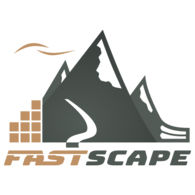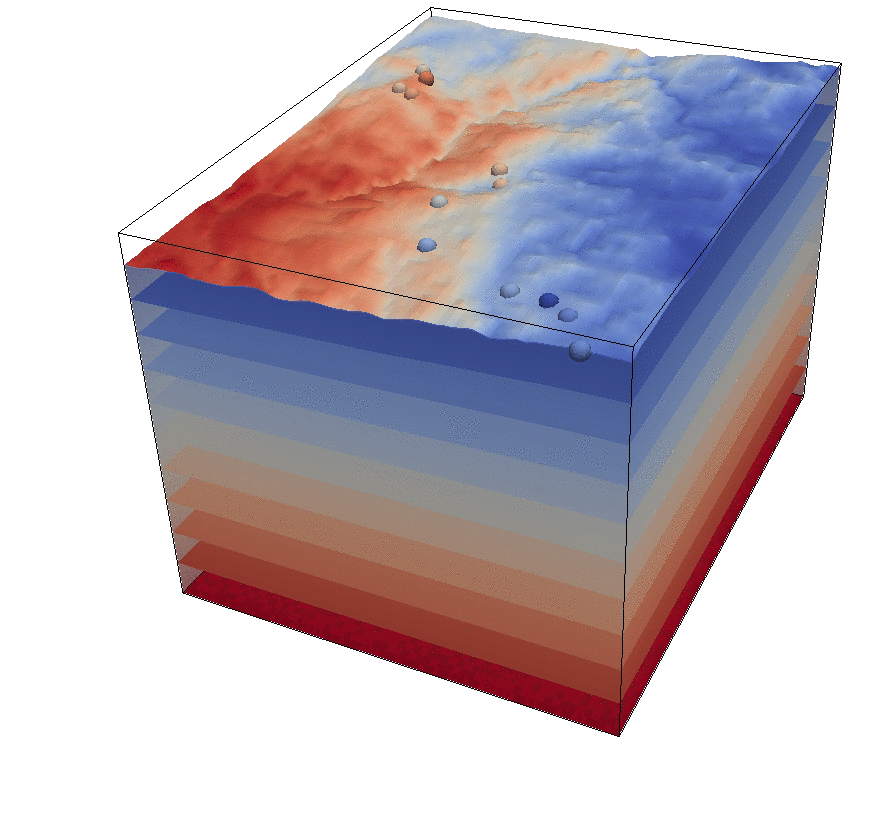Sektion 4.7: Erdoberflächenprozessmodellierung
Software
Fastscape
Fastscape is a set of open-source software components aimed at making landscape evolution models and topographic analysis algorithms readily accessible to a wide range of users, from experts in landscape evolution modelling to scientists, researchers and teachers in the broader Earth science community.
More info: https://fastscape.org/
“Source-to-Sink” (S2S) system modelling
In this animation we show the results of a computation performed with FastScape. It represents a so-called “Source-to-Sink” or S2S system with sediments traveling from the source area (the actively uplifting and eroding mountain), through the continental plain at the foot of the mountain before being deposited on the seafloor where they accumulate to form what we call the marine sedimentary record. For many years, geologists have been trying to “invert” that sedimentary record to infer past tectonic and climatic conditions. Using FastScape we can test a large number of scenarios and compare their predictions to the sedimentary record and, from this comparison, determine the plausibility of the tested scenarios. In this example, the system is subjected to variations in precipitation rate and sea-level. Periods of high sea-level correspond to periods of reduced precipitation and therefore reduced sediment production in the source area. This leads to cycles of progradation (when the sediments are preferentially deposited offshore) followed by period of aggradation (when the sediments accumulate in the nearshore area). The model can also predict the geometry of rivers flowing on the coastal area with, for example, a marked transition from single to multiple channel transport during periods of sea level fall.
Pecube
Pecube, a 3D thermo-kinematic model to interpret thermochronological data. Pecube solves the 3D heat equation and tracks the position of rock particles to compute their thermal histories, and from them, estimates of their ages for a wide range of thermochronological systems. Pecube is also designed to be used for large-scale inversions of thermochronological data, using an impeded version of the Neighbourhood Algorithm.
Pecube can be found on GitHub: https://github.com/jeanbraun/Pecube
Infrastruktur
Unsere Modellierungsarbeit wird durch den Zugang zu modernsten Rechenanlagen am GFZ, PIK und anderen lokalen und nationalen Instituten unterstützt. Die Sektion hat auch einen kleinen Cluster für den internen Gebrauch angeschafft:
- 48 Intel Xeon Gold 6230 CPUs jeweils mit 20 Kernen/40 Threads
- 16 GB DDR4 2666 MHz ECC-registrierter RAM
- 1 TB HDD
Sowie ein GPU-Server:
- Dell PowerEdge R940xa
- 4 NVIDIA Tesla V100 32G Passive GPUs
- 4 Intel Xeon Gold 6152 mit 256 GB RAM
Unsere Sektion befindet sich im Hauptgeschoss des historischen Gebäudes "Großer Refraktor" auf dem Telegrafenberg, wo wir in einem großen offenen Raum arbeiten, der mit modernen Arbeitsplätzen inklusive hochauflösender Monitore, einem großen Seminar-/Besprechungsraum und weiteren Büros/Einrichtungen ausgestattet ist.


